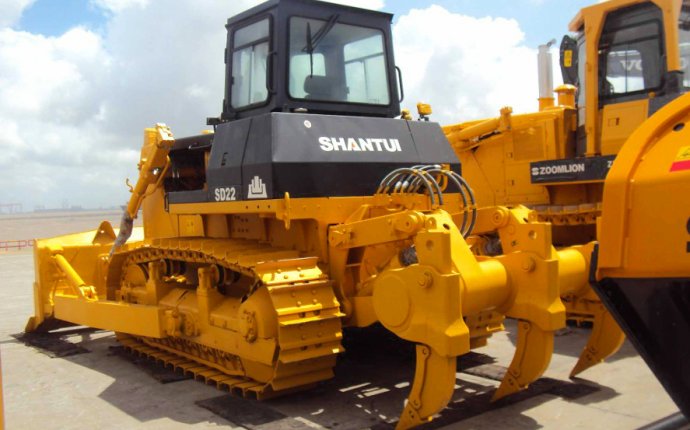
Buldozer Vomiting
 The shareholder " Huta Stalowa Wola S.A. " refers to the world ' s leading manufacturers of road and earth-moving equipment capable of producing modern, heavy-duty bulldozer-reflection heaters up to 60 tons and with engines exceeding 500 litres.s.
The shareholder " Huta Stalowa Wola S.A. " refers to the world ' s leading manufacturers of road and earth-moving equipment capable of producing modern, heavy-duty bulldozer-reflection heaters up to 60 tons and with engines exceeding 500 litres.s.
This type of bulldozer was developed in 1981 jointly by HSW engineers and IHC American engineers, and was placed in the production line in 1983. Given the increasing requirements for performance indicators, the TD-40 bulldozer was upgraded in 1988 and received the TD-40B index. In all previous years, some 300 TD-40 machines were produced, 80 per cent of which were delivered to the United States. Since 1992, delivery of the TD-40B bulldozer to Russia and other CIS countries has started. To date, some 50 such vehicles have been supplied to various Russian enterprises, mainly in regions with complex climatic and geographical conditions. The specialists appreciate the technical and economic performance of the TD-40B bulldozers, which illustrates the increasing number of machines in the Russian market. Thus, as a result of the operation of bulldozers at the AOOT " Razrez Kedrovsky " (Mr. Kemerorovo), the average annual vehicle processing for 3 years of operation was 5,000 moto-hours and spare parts cost $3.2 per moto hour.
HSW is continuously improving the construction of its machines. As a result of the implementation of the increased comfort requirements for bulldozers, the safety of the driver ' s work, the reduction of environmental hazards, productivity, the reduction of maintenance work, repairs, etc., a new modification of the bulldozer, TD-40C, whose production and delivery began in 1996.
The main objectives of the modernization were: to improve the productivity of the bulldozer; to improve the strength and design of the machine; to improve the management of the bulldozer movement and the management of working equipment; to facilitate the management of the machine and to improve the comfort of its operation; to improve the safety of the operator; to reduce the harmful effects on the environment; to reduce labour intensity, to increase the frequency of maintenance of the vehicle, etc.









